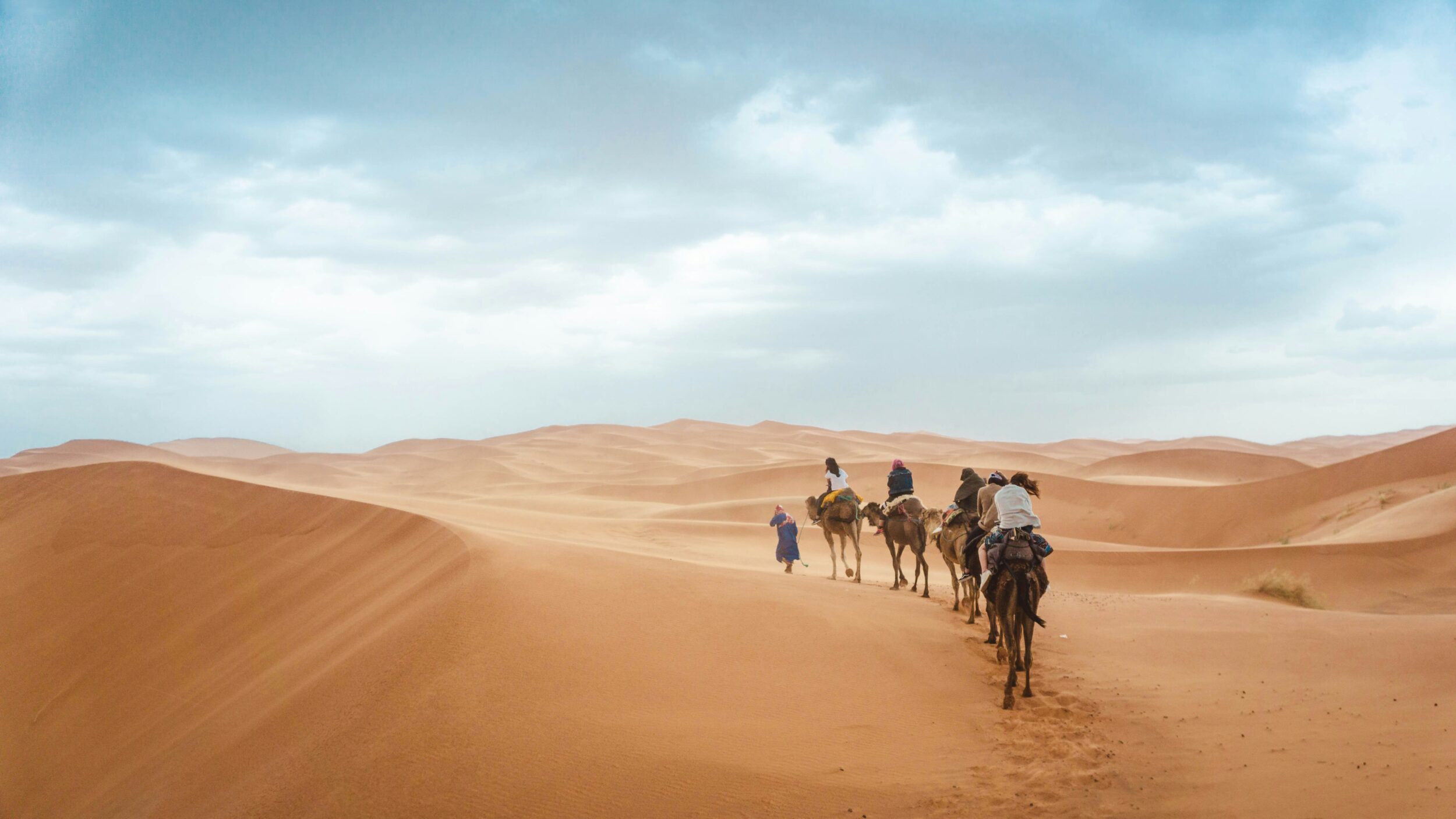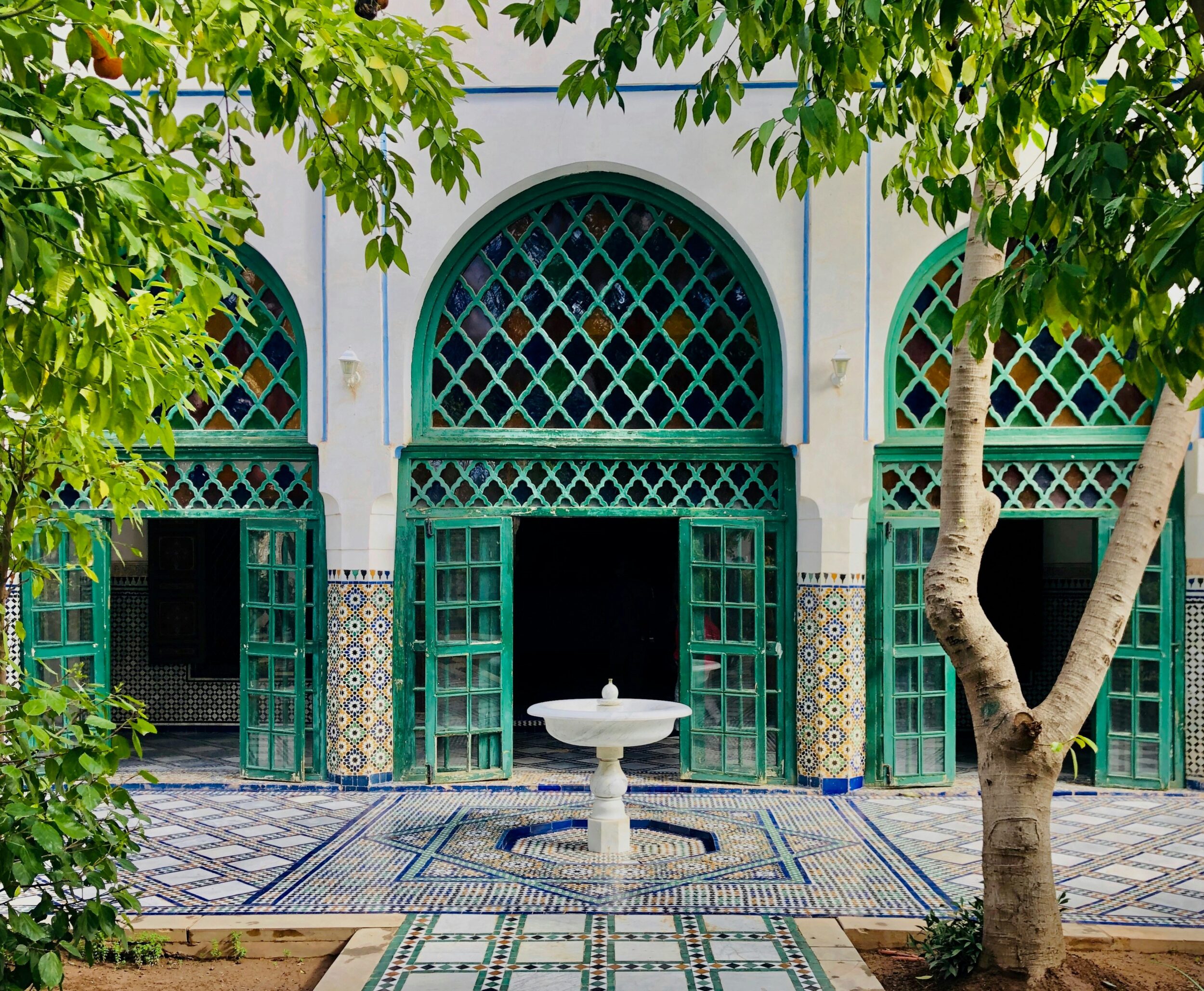Morocco – Destination Guide
Morocco, a land of contrasts and captivating beauty, invites travelers to explore its vibrant cities, rugged landscapes, and rich cultural heritage. From Tangier to Casablanca and Marrakech, every Moroccan city is a feast for the senses. The delicious and enticing smells of local food markets, the elaborate Moorish architecture, and the vibrant street life make Morocco a treat for any traveler. When most people think of Morocco, they imagine Humphrey Bogart and Ingrid Bergman in Casablanca, with Bogart proclaiming, “Of all the gin joints in all the towns in all the world, she walks into mine.” Any traveler will count themselves lucky upon walking into Morocco.
Moroccan culture has been influenced by a diverse array of civilizations. Arab dynasties, French and Spanish colonization, and Berber traditions have all left their mark, enriching Moroccan culture. The best place to witness this cultural tapestry is in the medinas. Each major Moroccan city has its own medina, or old town, where narrow cobblestone streets wind through bustling markets. In the medina, you can find bakers selling honey-drizzled pastries, rug salesmen touting their wares, and artisans crafting intricate pottery. These vibrant, maze-like quarters offer a glimpse into Morocco’s rich heritage and daily life.

Cities and Regions
Marrakech
Marrakech, known as the “Red City” for its distinct red sandstone buildings, is a sensory delight. The medina, a UNESCO World Heritage site, is a labyrinth of narrow alleyways filled with souks, where you can find everything from spices and textiles to traditional crafts. Don’t miss the iconic Jemaa el-Fnaa square, which comes alive at night with food stalls, musicians, and storytellers. Visit the Bahia Palace, the Saadian Tombs, and the Majorelle Garden for a taste of Marrakech’s historical and artistic heritage.
Fes
Fes, Morocco’s cultural and spiritual heart, boasts the world’s largest car-free urban area. The Fes el-Bali medina is a maze of narrow streets, historic mosques, madrasas, and bustling markets. Key highlights include the University of Al Quaraouiyine, the oldest existing, continually operating educational institution in the world, and the stunning Bou Inania Madrasa. The city’s rich history is palpable in its ancient architecture and traditional craftsmanship.

Casablanca
Casablanca, Morocco’s modern metropolis, is known for its blend of contemporary and traditional influences. The Hassan II Mosque, one of the largest mosques in the world, stands majestically by the Atlantic Ocean and is a marvel of Moroccan craftsmanship. The city’s French colonial legacy is evident in its architecture, particularly in the art deco buildings of the city center. Casablanca’s cosmopolitan vibe is reflected in its lively cafes, restaurants, and shopping districts.
Chefchaouen
Nestled in the Rif Mountains, Chefchaouen is famous for its striking blue-washed buildings. This picturesque town offers a peaceful retreat with its relaxed atmosphere, charming streets, and stunning mountain views. Explore the medina, visit the Kasbah, and hike in the surrounding hills for breathtaking scenery.
The Sahara Desert
No trip to Morocco is complete without experiencing the Sahara Desert. Embark on a camel trek to the dunes of Erg Chebbi or Erg Chigaga, where you can spend a night in a traditional Berber camp under a sky full of stars. The vast, golden landscape of the Sahara offers a sense of serenity and adventure, making it a highlight of any Moroccan itinerary.

Culinary Highlights
Moroccan cuisine is a feast for the senses, characterized by its rich flavors and aromatic spices. Some must-try dishes include:
- Tagine: A slow-cooked stew made with meat (often lamb or chicken), vegetables, and a blend of spices, cooked in a conical clay pot.
- Couscous: Steamed semolina grains typically served with meat, vegetables, and a savory broth.
- Pastilla: A savory-sweet pie made with layers of thin pastry, filled with spiced meat (usually pigeon or chicken), almonds, and cinnamon.
- Harira: A hearty soup made with tomatoes, lentils, chickpeas, and spices, often enjoyed during Ramadan.
- Mint Tea: Known as Moroccan whiskey, this sweet, refreshing tea is made with green tea, fresh mint leaves, and sugar, and is a staple of Moroccan hospitality.
Practical Information
Currency
The currency in Morocco is the Moroccan Dirham (MAD). ATMs are widely available in cities and larger towns, and credit cards are accepted in many hotels, restaurants, and shops. However, it’s always a good idea to carry some cash, especially when visiting rural areas and markets.
Language
Morocco’s official languages are Arabic and Amazigh (Berber). French is also widely spoken, especially in business, government, and tourism. English is increasingly spoken in tourist areas and among the younger population. Learning a few basic phrases in Arabic or French can enhance your travel experience and help you connect with locals.

Travel Tips
- Dress Modestly: Morocco is a conservative country, and it’s respectful to dress modestly, especially when visiting religious sites and rural areas.
- Bargain Respectfully: Haggling is part of the shopping experience in Moroccan markets. Approach it with a sense of humor and be respectful in your negotiations.
- Stay Hydrated: The climate in Morocco can be hot and dry, especially in the summer. Drink plenty of water and consider carrying a reusable water bottle.
- Respect Local Customs: Be mindful of local customs and traditions, especially during the holy month of Ramadan when eating, drinking, and smoking in public during daylight hours are discouraged.
Morocco’s enchanting blend of ancient traditions and vibrant modernity offers a unique and unforgettable travel experience. Whether you’re exploring the bustling medinas, trekking through the majestic Atlas Mountains, or enjoying the tranquility of the Sahara Desert, Morocco’s rich cultural heritage and stunning landscapes are sure to captivate your heart.
